#Cline Family Cellars
Text
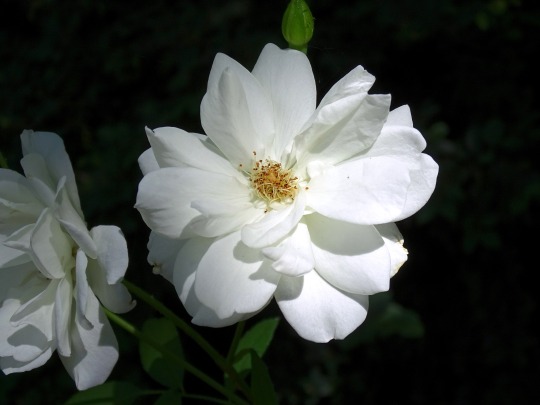

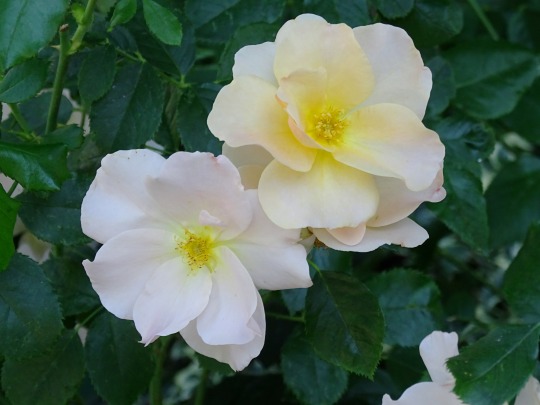
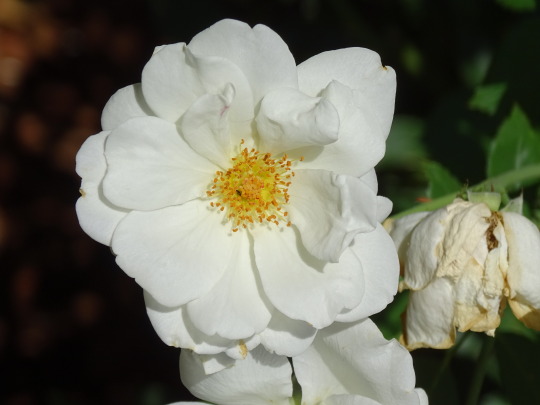
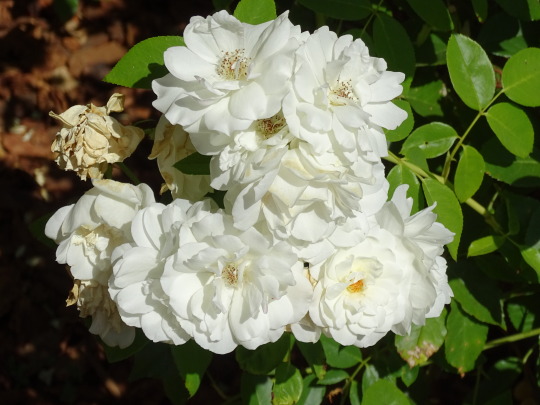
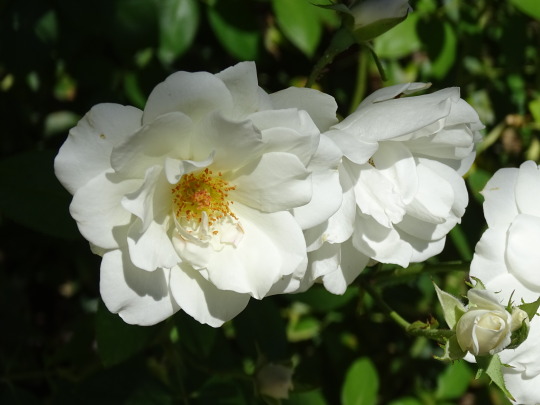
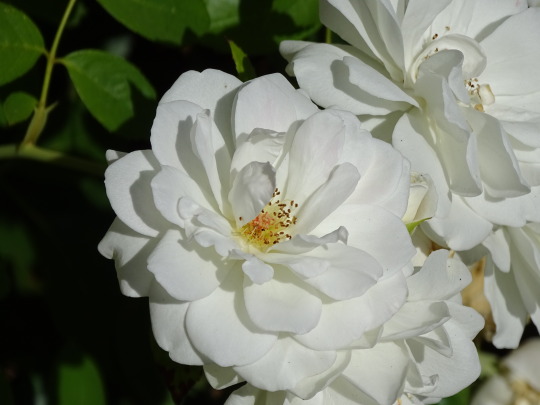
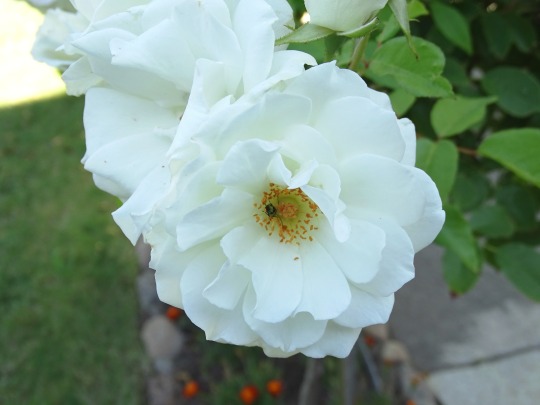

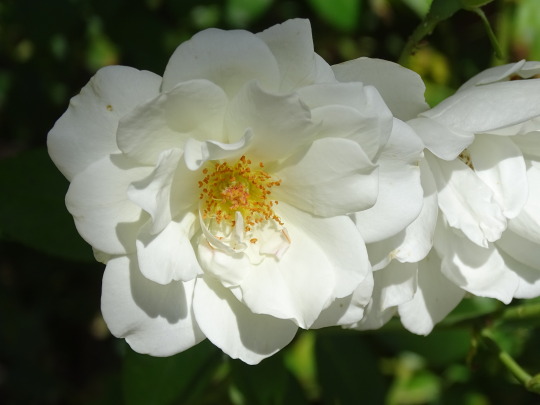
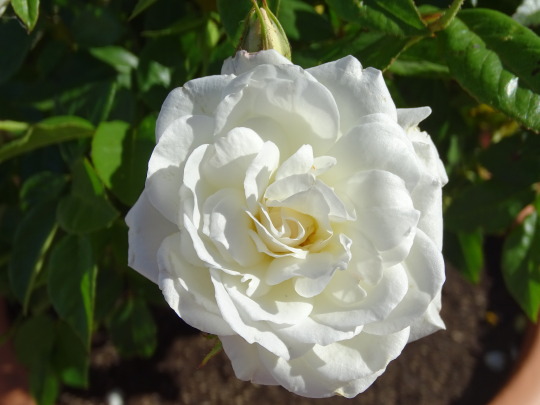




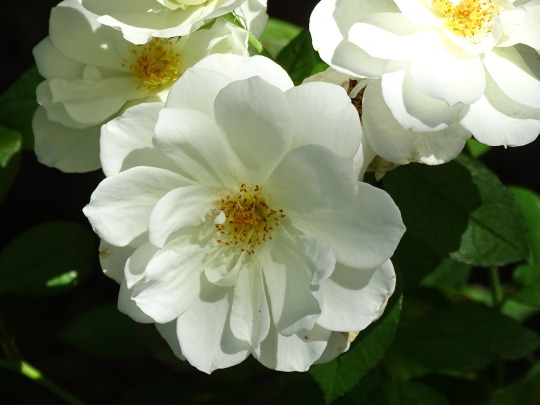
Members of the White Rose resistance, Sophie Scholl, Hans Scholl, and Christoph Probst are executed in Nazi Germany on February 22, 1943.
#Cline Family Cellars#Sonoma Valley#flora#flower#blooming#rose#USA#Beringer Vineyards#Freemark Abbey Winery#St. Helena#Napa Valley#travel#summer 2022#original photography#California#Domaine Carneros#Germany#White Rose resistance#Sophie Scholl#Hans Scholl#executed#22 February 1943#anniversary#Germany history#World War Two#WW II#Widerstand#2023
10 notes
·
View notes
Text
Sonoma’s Cline Family Cellars names new CFO, marketing executives
Sonoma’s Cline Family Cellars names new CFO, marketing executives
Steve Janicelli is the new chief financial officer of Sonoma-based Cline Family Sellers, founded in 1982.
In addition, the winery, with 750 acres of vineyards, has hired Hilary Cline as vice president of marketing and direct-to-consumer sales.
“As the daughter of Fred and Nancy Cline, founders of Cline Family Cellars, Hilary feels a deep connection to the family winery and vineyard. He has…

View On WordPress
0 notes
Text
Meadow Muffin
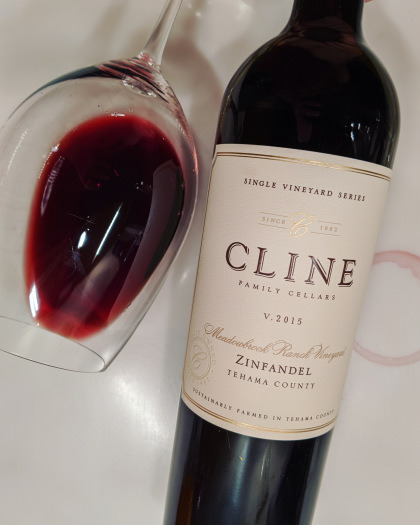
Medium ruby with garnet edges. A most repulsive nose, equal parts eucalyptus and hot-dog farts. A grassy, rubbery putridness envelopes everything, making any search for fruit–or anything else worth smelling–completely futile. It never changes.
This is Cline’s little venture into a part of California wine country I am quite familiar with: Tehama and Shasta Counties, in the far north foothill…
View On WordPress
#Cascade mountains#Cline Family Cellars#Cline Winery#MEadowbrook Ranch Vineyard#Mt. Lassen#Paynes Creek#Sierra Foothills#Sierra Foothills wineries#Stephen McConnell Wine Blog#Steve McConnell Wine Blog#Tehama County#Tehama county wines#wine1percent#Zin#Zinbitch#Zinfandel
0 notes
Text
Farmhouse Wines - A Commitment to Sustainability
Farmhouse Wines – A Commitment to Sustainability
Protecting our ecosystem is a priority for many winegrowers. Sustainable and organic farming practices to protect our earth, air, water and soils are at the forefront of many wineries. Focusing on long-term sustainable practices also enhances the flavor profiles of the grapes. Learning from farming techniques from his grandfather, renowned winemaker Fred Cline makes socially and…
View On WordPress
#Biodynamic Wine#Bob Cannard#Cline#Cline Family Cellars#Farmhouse Red Wine#Farmhouse White Wine#Farmhouse Wines#Fred Cline#Green String Farm#Natural Wine#Sustainable Winery#White Blend#wine
0 notes
Text
More and more wine producers are embracing environmental consciousness. Whether out of concern for conserving our planet and its resources, or reacting to consumer and market demands, there is no doubt that organic, sustainable, natural, and biodynamic wines are on the rise and here to stay.
It’s not just the small, boutique, dare I say “hippie” or “hipster” wineries that are turning toward Earth-friendly farming practices. Many well known, large production producers are getting on board, and at converting at least a small percentage of production to sustainable farming, most with an eye toward long-range growth and conversion.
Recently, we received an invitation to sample two natural wines, Farmhouse Wines, produced by Cline Family Cellars. If you don’t know Cline, you really ought to get out more. Fred Cline founded Cline Family Cellars in 1982. He started in Oakley, California, in the Delta region, east of San Francisco. In 1989, he moved the winery to Sonoma County. One of the original Rhone Rangers, Fred Cline helped establish Northern California as a serious producer of Rhone varieties like Syrah, Viognier, Marsanne, and Roussanne. Cline Family Cellars has gone on to expand their portfolio to include a plethora of grape varieties, and produces some stellar wines.
Photo Credit: Cline Family Cellars
Fred Cline and his Soil Manager, Bobby Cannard (aka The Soil Whisperer) have developed biodynamic practices they dubbed the Green String method. A significantly environmentally friendly farming process, it minimizes pollution of the air, soil, and water, and minimizes the overall environmental footprint. Utilizing natural weed control (sheep and goats), cover crops, aviary pest control (owls and hawks), and ar power, they have made big inroads in sustainable farming. They established a farm, the Green String Farm, in Petaluma, CA, to foster these practices, producing a variety of crops for consumers. They even established an internship program to expose farming students to these practices.
There are two Farmhouse wines; a white blend and a red blend. Both are natural, sustainably produced wines. They are unpretentious, user-friendly, sealed with screwcap, and easy drinking. Oh, and they retail for just $15! That’s wallet friendly, too!
Photo Credit: Cline Family Cellars
Winemaker Charlie Tsegeletos wants the grapes to take center stage in these wines. He uses minimal oak, and incorporates blending to bring out the best of each variety and vintage.
The following wines were provided as a media sample for review. All reviews, descriptions, and opinions are our own. We received no additional compensation.
The 2017 Farmhouse White is a blend of Palomino (41%), Muscat Calelli (25%), Rousanne (22%), Marsanne (6%), Viognier (5%), and Riesling (1%). Cold fermented in stainless steel tanks, the resulting wine is light and fruity, with balance and finesse. Here’s what we thought of it:
A very interesting white blend. Don’t serve too cold or the bouquet and flavors will be muted. Pale peach color. Aromas of peach, honeysuckle, mango, and tangerine. On the palate, there are flavors lemon curd, guava, mango, and peach, with a touch of honey on the finish. That’d be the Muscat! Medium body and acidity. Fruity, mildly sweet. Pleasant for sipping, structured enough of fish, chicken, or spicy Thai.
The 2017 Farmhouse Red leads with a punch of Zinfandel (59%), followed by Syran (15%), Carignane (9%), Mourvèdre (6%), Petite Sirah (5%), and the remaining 6%, splashes of other red varieties. Fermented in stainless steel tanks, the wine is racked into 40% new French oak to enhance the flavors as it ages. Here’s what we thought:
Inky purple color. On the palate, aromas of raspberry, fresh blackberry, clove, and spice. On the palate, boldly fruit forward; bordering on jammy but there is enough complexity to bring some balance. Flavors of ripe blackberry, black cherry, cassis, and black plum, with licorice, baking spice, black pepper, and caramel. Rich and full bodied with round mouthfeel and bright acidity. The finish is very long with black fruit, ripe plum, and black pepper.
For more on the Farmhouse line, check out their video from the Farmhouse Wines website:
youtube
Both Farmhouse wines would be at home on your Thanksgiving or other holiday table, and equally comfortable snuggled up on the couch in front of a warming fire, binge-watching your favorite Netflix show.
Let us know, in the comments, what you paired it with, and what you’re binging on Netflix!
Cheers!
By Kent Reynolds and Robyn Raphael
Down Home with Farmhouse Wines More and more wine producers are embracing environmental consciousness. Whether out of concern for conserving our planet and its resources, or reacting to consumer and market demands, there is no doubt that organic, sustainable, natural, and biodynamic wines are on the rise and here to stay.
#Biodynamic Wine#Cline#Cline Family Cellars#Farmhouse Wines#Green String Farm#Natural Wine#Organic Wine#Red Blend#Samples#Sustainable Farming#Sustainable Wine#White Blend#Wine#Wine Blog#Wine Country#Wine Education#Wine Enthusiast#Wine Experience#Wine Lovers#Wine Review#Wine Tasting
0 notes
Text









Party Time at the Jacuzzi Winery. Adobe Mission at Cline Family Cellars. Sonoma, California 🥂. 04232022
0 notes
Text
It would make him discontented and unhappy.
In the final analysis, how Egypt's elections measure up depends on the measuring stick one uses to assess its importance.. It would make him discontented and unhappy.” There words sank deep into my heart, stirred up sentiments within that lay slumbering, and called into existence an entirely new train of thought. Still have that stick up your arse?” He turned to Young Griff. Higher the speed, faster are the overall operations of the drive. Clydas returned to the hearth to stir the wine. But if she left, what would happen to her city? Meereen was never your city, her brother’s voice seemed to whisper. He broke his fast in the cellar with his officers. "You could tell from the [9 2 loss] that [my absence] did have an impact," Alse said. It came two days after Athanasiou made one of his assistant coaches smile with a different sort of handiwork."I feel bad for the guys who are on the same start line where he puma red bull racing evo cat ii is," Tomas Tatar said with a smile. But you know how one may love a child.” (My heart melted looking at her and at her eyes fastened upon me intently with profound, earnest and impatient attention.) “And the less Natasha herself is like a child, the more serious she is, the more readily she might fall sandalias doradas gioseppo in love with him. The scene with the locket affected her deeply.. Will it receive a warmer reception than the lauded High Line in Manhattan? Or will critics who called it nothing more than a backyard for pricey condos be proven right?. He alleged that he had been the subject of poor dental treatment, that the dentist had caused the pain by damaging the nerve and that he had never been made properly aware of the risks. She never expected her daughter to drop so low." But it could all have been in the genes. “He has heirs. What could he be thinking? After Hizdahr had given command of the Brazen Beasts to his cousin Marghaz zo Loraq, Skahaz had been named Warden of the River, with charge of all the ferries, dredges, and irrigation ditches along the Skahazadhan for fifty leagues, but the Shavepate had refused that ancient and honorable office, as Hizdahr called it, preferring to retire to the modest pyramid of Kandaq. These types of guidelines are often useful for individuals who favor to add additional relevance for their conditioning. She will never wash the stain away, no matter how hard she scrubs. In comparison, the neat Nissan looks a little bland.The Kuga costs more to buy than its rival, and when you climb aboard it's easy to see where the money has been spent. The threat was a serious one. That it is lawful for the master to chastise his slave, and that if death ensues from such chastisement, unless it was intended to produce death, it is like the case of homicide which is committed by a man in the performance of a lawful act, which is manslaughter only. Dementia doesn discriminate and can affect anyone. The tumult and the shouting died. He was a great skater. Not all the fighting men were broken, though. I will tell him everything, speaking only for myself, only for myself! You shan’t be mixed up in it.. As a squire he could sleep papuci de casa din pasla ten hours a night and still be yawning when he stumbled out onto the practice yard. May 9 at the school at 8300 Quintana St. Thanks to Ernie, you can't just have a big name now, you've got to have somebody with a great message. Other amenities for the 74 passengers included both men's and women's dressing rooms, a galley that served gourmet meals catered from four star hotels, a dining room that could seat 14 diners, and a deluxe compartment, or bridal suite. I think I can finally start telling stories properly.. The Lyseni at Pynto’s think that she’ll return with more ships. Thanks to a small facelift in 2016 it still feels fresh, with a new look and the latest in car tech.Best people carriers and MPVs on the marketThe BlueHDi 100 diesel is the most efficient model in the range, claiming 74.3mpg fuel economy and CO2 emissions of 99g/km. Natasha was suspicious but pure-hearted and straightforward. I cried. In the wake of the 1900 storm, farmers were given strawberry plants for an interim crop. gotcha karkötő Christians were the main lobbying force behind the new state law. The employees are way overpaid and that sandalias doradas gioseppo why fares are so high and why BART hasn set aside the money oakley m frame ice iridium needed for maintenance and capital improvement. Get daily updates directly to your inbox+ SubscribeThank you for subscribing!The new estate, which will cost from when it reaches showrooms in November, is not only more spacious but has jettisoned a shedload of weight. Are many housing projects under construction in Greater Noida as well, but there is no dust on the roads there because the area already has infrastructure facilities. When the lower esophageal sphincter muscle relaxes, it lets the gas out a belch.. It was close to sunset before Daario Naharis appeared with his new Stormcrows, the Westerosi who had come over to him from the Windblown. A man and a teenage boy fill buckets with gravel and load them onto a truck. “Well, it wouldn’t have been a bad idea,” he said. On Earth, as on any other planetary body with a thick atmosphere, sure, but I don know about something as thin as the atmosphere of Pluto or Earth upper atmosphere, for that matter. The instant Marie heard him make this proposal she coach purse coupons untied her pockets, and gave them to Surgeon H bert with nike air zoom flight premium her own hands. Drifts of dirty snow had piled up against the walls, filling every nook and corner. Beneath an ermine cloak, she wore white and gold. When I went in she was, as usual, walking up and down the room, with her hands clasped, meditating. The hostages went first—one hundred boys between the ages of eight and sixteen. Do they just go down forever?. The poor fellow fell to the ground entirely insensible, and the family were obliged to spend nearly two hours employing various means to restore his vitality. Tyrion sensed a ship in his immediate future. He never separates families. The topic came up in last week's Celebritology Live discussion and by the end of the chat I had oneil mellény promised to compile a list of my top 10 objects of attraction.. The papuci de casa din pasla refreshed MacBook Air's dimensions are virtually unchanged from the previous generation, measuring 0.11 inches at its thinnest point and 0.68 inches at its thickest, 12.8 inches wide, and 8.94 inches deep, and weighing 2.96 pounds. Advises he will stay with family, the document states. Although using a penis pump will not give long lasting physiological results, such as curing impotence, using a penis pump nike jean jacket over a few months can have a healthy psychological effect on the user. Over the years of doing this job I've developed a healthy air max 90 ultra se respect for the Ram. In Tampa, books were around Genet, Cline, Brautigan but their world felt far away.
0 notes
Text
Next Round: Hilary and Megan Cline Are All in on the Petaluma Gap

On this episode of “Next Round,” host Adam Teeter invites Hilary and Megan Cline, second-generation owners of Cline Family Cellars and co-owners of Gust Wines, to discuss why they have chosen the Petaluma Gap as the focus for their new business. This AVA is a sub-region of the Sonoma Coast AVA in California and is known for its cool, windy climate, which allows for more textured wines.
The Cline sisters also delve into life before joining the wine industry and explain how they ultimately found their way back to the family business. Since launching Gust back in 2017, the sisters have successfully produced Chardonnay, Pinot Noir, and Syrah. However, like many wine producers, Covid-19 forced them to reevaluate their plans. Tune in to hear Hilary and Megan Cline explain where they think the wine industry is heading, as well as their future plans for Gust.
Listen Online
Listen on Apple Podcasts
Listen on Spotify
Or Check out the Conversation Here
Adam Teeter: From Brooklyn, New York, I’m Adam Teeter, and this is a “VinePair Podcast” conversation. For those of you who know, we’ve been bringing you these conversations between our regularly scheduled podcast episodes to give everyone a better picture of what’s going on in the alcohol beverage industry. Today, I’m super excited to be joined by Hilary and Megan Cline, the owners of Gust Wines. Hilary, Megan, what’s up?
Hilary Cline: What’s up? Thank you so much for having us.
Megan Cline: Appreciate it, Adam.
A: Of course. Everyone knows that I have two of you on the show. Which one is Hilary talking, and which one is Megan?
H: OK, so I’m Hilary. I’ve heard we have a similar voice, though. I hope they’ll be distinct enough.
M: Yes! Hi everyone, I am Megan Cline.
A: So sisters, yes? Talk to me about Gust.
M: We started Gust back in 2017. Our whole goal with Gust was to make really great and beautiful wines from the new AVA (American Viticultural Area), the Petaluma Gap.
A: But you didn’t start Gust just out of not having any background in wine, right?
M: Correct. We are part of the second generation of Cline Family Cellars. We’ve both been working with our family for the past five years. It’s six years now, is that right Hil?
H: About six years, and different roles at Cline. Through Cline, our family had planted vineyards in the Petaluma Gap about 30 years ago, in the early ‘90s. We grew up part of our childhood on those vineyards in the Petaluma Gap and always been in and out of the wine business. Then, in recent years, as my dad gets a little older, we’ve gotten more involved. Then, we really wanted to put our own spin on things. Cline has been around for so long, and it’s so much about Zinfandel and these Rhône varietals, where we were super excited about Pinot Noir, Chardonnay, and the cooler-climate region of the Petaluma Gap. That’s what inspired us to go out on our own with Gust.
A: For both of you, was there a time when you had thought about not going into the wine industry? Was this something you always knew you wanted to pursue because you had the family connection to it? The reason I ask is because, when I talk to winemakers from Europe, they always say how they’re their kids now — our generation — is not going into wine. I don’t want to do that anymore, even though four generations before me all did it. We are, but we do it the American way. I believe that’s a misunderstanding because a lot of Americans do go into wine. Your family owns a vineyard, it’s a cool business to be in. I’m wondering if you had ever thought about not doing it? What caused you to decide to go into the family business?
M: Yeah, absolutely. I for sure never thought I was going to be in the wine industry. I think growing up around it, it’s “Oh, God, wine so boring. There’s nothing to do here.” Then, you move away and then you realize that we live in or we grew up in the most beautiful place in the world. I for sure wanted to live on the beach. I want to live in a city. I moved to Santa Barbara and got into wine down there. I got into wine separately from working with my family and got into the sales part of wine, got into the somm world, and then eventually decided to move back home. Then, I figured if I’m going to work in wine, Sonoma is the place to be is with my family.
A: That’s super cool. They have a wine crawl downtown, right?
M: Yeah, I worked at the Funk Zone. I got super into the somm world and took my certified sommelier course. Then, I realized I wanted to work in the production side of wine instead of the sales part.
A: Oh cool.
M: Where you’re actually creating something tangible versus just selling something.
A: Were you on the floor, or were you doing a lot of things?
M: Well, I was working at tasting rooms, actually, in the Funk Zone, but my coworkers were going through their somm tests and convinced me to join. That’s where I was falling back in love with wine. Back to my roots.
A: Hilary, what about you?
H: Yeah, definitely the same. I think my parents were really good about not pushing it on us at all. I moved to Portland and studied psychology and Russian, and I spent a year after college in Siberia. I did a Fulbright there and was on this whole other path with Russian language and translation. Then, my parents talked to me. They came to this point where for family-owned businesses, either someone’s going to step up and get involved, or they have to think about selling. I know they really didn’t want to. I was around 25 and they asked do you want to come work here? There are just so many feelings that are connected to the winery growing up. I definitely wanted to try it out at least. I started with Cline doing wholesale sales, which was a very interesting world to jump into. I was calling on accounts in San Francisco. That was quite an education. Then I also wanted to learn more about production. I did a couple of harvests with other producers. I worked a harvest with Sojourn at their Santa Rosa facility. Then a harvest in New Zealand. Then worked a viticulture harvest for Pernod here in the U.S., too. I’ve been trying to get into different angles of the industry because I didn’t have a solid background when I started back with the family.
A: Makes sense. Is it just the two of you as far as the kids, or are there others?
H: Our brother Henry, he just started. He’s 23, right, Megs?
M: Yeah.
A: I love that you have to ask. That’s awesome.
M: To be fair, there are seven kids in the Cline family, so keeping track of everyone’s age is definitely a task.
H: He just started working for the family a month ago. He’s really interested in the viticulture piece. That’s what my dad’s super passionate about, and he’s given Henry a lot of passion surrounding that. He’s just starting to learn about vineyards.
A: Awesome. So, you both decide to come back to the family business, but not just doing wines under the Cline name, you decide to start Gust. What was the reason for that, and why did you decide to do it together?
M: I think Hilary talked about it a little bit. I think we always gravitated towards these cooler-climate wines. We knew that there was so much potential in the vineyards that we had access to, that for the most part all of the grapes that we had planted were going into one big blend. We saw this opportunity where we have these amazing site orientations, clones, and really beautiful vineyards where we knew we could create something super special.
H: I think when I was out selling wine, I did it for four-something years. I think going to restaurants and talking to different people, people were very excited about the Petaluma Gap. People get very excited about small projects. I thought that if we put in the effort to make handcrafted, artisanal, or our own spin to highlight Petaluma Gap, people would respond to it.
M: As far as working together, I think that’s always been my favorite part about working with my family, is being able to work with Hil and my dad. We work really well together. We knew that we could create something super cool.
A: What is it about the Petaluma Gap that’s so special?
M: It’s a really interesting growing region. It’s the only AVA that is based on wind. The wind is super cool. It creates smaller berries, and then you also have thicker skins. You’re getting a bigger skin-to-juice ratio, so the wines are super, super textured. It’s also part of the Sonoma Coast, so you have this longer growing season with the fog in the morning, and then those cooler afternoon winds. You’re getting that full flavor development as well.
A: Very cool. What wines are you making?
M: We make a Chardonnay, Pinot Noir, and Syrah. And then we are soon to be releasing our single-vineyard Pinot and Chardonnay.
A: OK, right now they’re from a few vineyards. Then you’re going single-vineyard in the next year, or sooner than that?
M: Next month, we are releasing the first vintages of our single-vineyard.
A: What made you want to do a single-vineyard?
M: We just zeroed in on our favorite blocks on our Catapult Ranch, which is one of the vineyards we work with. We tasted those individual barrel lots from those individual sites and loved them.
H: The one vineyard we focus on, Catapult Ranch, is really unique and it’s something only in the middle of the wind gap. It’s our highest- elevation vineyard, which in the gap translates to it actually being warmer climate there. The wines can be more fruit-forward. A little bit richer. A little bit rounder as compared to our other ranch that’s on the valley floor. I think most AVAs would be the opposite, but because of the way the fog sits and the wind comes in, we get to experience something very unique. We really wanted to highlight that with the single-vineyards from Catapult.
A: Very cool. Talk to me about building the brand. Obviously, you decide to start this 2017. Was that when you decided to start, or that was the first vintage you released?
M: That was our first vintage. We had decided to start earlier in 2017 around January, and that was our first harvest as well.
A: OK, cool. When did bottles first hit the market?
M: Last year. Our first release was last March. Exactly a year ago, which was a bad time to release wines.
A: I’m curious about that. What were your plans for the brand prior to Covid, and how did things change? How many cases did you make?
M: We made about 200 cases of the Chardonnay, 400 of the Pinot Noir, and 200 of the Syrah.
A: OK, so very boutique.
M: Yeah.
A: Who was the market? Who were you going after? Was this going to be a restaurant brand, a collector’s brand? Who did you want, ultimately, when you had made that amount of wine to buy the wine?
H: We definitely wanted to focus on DTC and restaurants. I think that’s a classic formula for this type of brand. Obviously, things changed a little bit. When we did finally send it out wholesale, we had no UPCs anywhere. We had to strip the label a little bit. We’re trying to get it into higher-end retailers, where I think that they can tell the stories of these wines just as well. That’s definitely been a pivot, and we have continued to try and focus on DTC. I think the hardest part is not being able to try the wines with people and trying to translate that experience virtually — a challenge which the entire industry has been struggling with.
A: We’ve had this conversation a lot recently about what it’s been like for brands who launched at the beginning of Covid and how they’ve been able to adapt and figure things out. You’re obviously a perfect example of this. People were able to pivot to DTC who already had a customer base. Since no one really tried the wines, I’m curious what things you tried in order to still get Gust out there? Did you try to push to current Cline drinkers?
H: Yes, people who drink Cline love Cline, and they’ve been following my dad for so many years and are so committed to the brand. I think it’s because they get great value out of the wines and love that it’s been a family business for so many years, as well as the flavor profiles. We did something we weren’t originally planning on doing. We were trying to keep it as separate as possible. It is something we ended up doing. We send it out through Cline to those long-term loyal club members and followers. They embraced it pretty hard. I think we had met a lot of them from growing up at the winery over the years. I think they responded enthusiastically, which was so amazing.
A: That’s awesome. Obviously, that was one of the pivots, and you talked a little bit about high-end retailers. In California, I would assume that Petaluma Gap is known. This is always the knock that New York gets, right? That we actually get more European wine in our stores than the California wine. When you were talking about higher-end retailers, did you have a market you decided you need to go to? I would assume that you were facing two barriers, which are the education on the new brand and also education on the new AVA. Where were your targets, and who did you go after?
H: Yeah, definitely. We have super-strong relationships in California, and I think that’s just a natural place for us to start. Even as small as starting in Petaluma itself, and then moving out from there, then the city to Southern California, which is such an important, huge market. I think there’s a lot going on down there. Right now, we’re focusing on California. Then, we also have a really great distributor in Illinois, Heritage Wines, and they have just taken Gust on. We’re slowly working with our distributors where it makes sense and slowly introducing the wines. I think we wanted a stronger, faster approach, but we’ve been able to spend more time on each launch and do it in a more surgical way, which has been helpful.
A: Have you traveled at all to some of these retailers, or no?
H/M: All virtual.
A: What’s that been like?
H: Meghan’s been doing most of those, so I’ll let her speak.
M: It’s been good. I definitely miss being able to do this in person where you’re with them tasting. It’s nice. We have small, cute tasting bottles that we send out, so we are still able to taste the wines with people. It’s totally different. Not bad, but I’m excited for the time when I can go out to these markets and meet these people and present the wines in person.
A: You brought up the point I’m curious about. How have you divided the labor in terms of the brand. Does one of you handle one section of the brand and the other handles the other? Or do you both do everything?
M: We both do a little bit of everything, for sure.
H: Yeah, I think we both do everything. Megan has been shouldering a lot more of the launching and those things. I’ve been out of commission a little bit due to health reasons just this year. She’s been taking over that part, which I’ve been super thankful for. In normal times, we are both involved in everything. Really involved.
A: Post-Covid, where do you see Gust going? Do you think you’ll go back to your original strategy of going back to restaurants as the ambassadors for the wine? Has this caused you to reevaluate completely how you want to get the wine to the market? Have you even started to have those thoughts yet, or are we still too far away? I’m curious to know where your heads are out there.
H: I do think people undersell the value of retailers. I think it’s been this classic strategy to always go on-premise. I think retailers have a great ability to tell a story as well. I think that’s something we do not want to abandon at all. But as restaurants reopen, we want to be part of their programs as much as possible. I think it still remains to be seen how wine programs and how the entire situation is going to change moving forward.
A: No, I think it’s interesting. We’ve talked about this a lot at VinePair for the last few years where we felt that retailers were getting ignored, just because it’s a lot cooler to go to an awesome restaurant, sit down, and your wine’s on the list. Retailers have, in a lot of ways, a deeper connection with their customers. They might see their customers once a week, whereas the restaurant might only see that customer once a year. It’s interesting to hear you say this as well. Covid has made a lot of people reevaluate, especially fine wine, reevaluate the importance of retailers as a path to discovery and loyalty. That’s interesting that you’re going through the same process that a lot of other high-end wines are going through. Where would you like to see Gust in five years? Where would you like this brand to be? Do you want it to be at the level of Cline? Do you want it to always maintain its status as a boutique brand? What would your goals be?
M: Yeah, I think we want to keep it small, boutique, really focused. I think there’s the possibility of bringing in new wines. But for now, for the next five years, I think we really want to dial in the Pinot, Chardonnay, Syrah, and make those to the highest level possible. I don’t think our goal is ever to be at the level of Cline. I think we want to stay really, really focused.
A: Do you think that we will see some influences on Cline from Gust?
H: I definitely think so. I think that everybody at Cline works closely together. We all do tastings together and we taste competitive set and all of that. And a lot of Pinot Noir and Chardonnay that we grow on these properties is used in the Cline programs also. I think introducing this whole idea of higher-end wines from the Petaluma Gap is already influencing the style of the Chard and Pinots that we’re putting out through Cline.
A: Well, Hilary and Megan, I want to thank you so much for taking the time to chat with me a little bit about Gust. Where can people find the wines right now?
M: Right now, they are available through our website, gustwines.com. You can find our current 2018 releases there.
A: Very cool. Well, thank you so much. I wish you both the best of luck in continuing to launch this brand. I hope at some point we can meet in person in the future.
M: Absolutely. Thank you so much.
H: Thank you, Adam.
Thanks so much for listening to the “VinePair Podcast.” If you love this show as much as we love making it, then please leave us a rating or review on iTunes, Spotify, Stitcher or whatever it is you get your podcasts. It really helps everyone else discover the show.
Now, for the credits, VinePair is produced and recorded in New York City and Seattle, Wash., by myself and Zach Geballe, who does all the editing and loves to get the credit. Also, I would love to give a special shout-out to my VinePair co-founder, Josh Malin, for helping make all this possible, and also to Keith Beavers, VinePair’s tasting director, who is additionally a producer on the show. I also want to, of course, thank every other member of the VinePair team who is instrumental in all of the ideas that go into making the show every week. Thanks so much for listening, and we’ll see you again.
The article Next Round: Hilary and Megan Cline Are All in on the Petaluma Gap appeared first on VinePair.
Via https://vinepair.com/articles/next-round-gust-wines/
source https://vinology1.weebly.com/blog/next-round-hilary-and-megan-cline-are-all-in-on-the-petaluma-gap
0 notes
Text
Next Round: Hilary and Megan Cline Are All in on the Petaluma Gap

On this episode of “Next Round,” host Adam Teeter invites Hilary and Megan Cline, second-generation owners of Cline Family Cellars and co-owners of Gust Wines, to discuss why they have chosen the Petaluma Gap as the focus for their new business. This AVA is a sub-region of the Sonoma Coast AVA in California and is known for its cool, windy climate, which allows for more textured wines.
The Cline sisters also delve into life before joining the wine industry and explain how they ultimately found their way back to the family business. Since launching Gust back in 2017, the sisters have successfully produced Chardonnay, Pinot Noir, and Syrah. However, like many wine producers, Covid-19 forced them to reevaluate their plans. Tune in to hear Hilary and Megan Cline explain where they think the wine industry is heading, as well as their future plans for Gust.
Listen Online
Listen on Apple Podcasts
Listen on Spotify
Or Check out the Conversation Here
Adam Teeter: From Brooklyn, New York, I’m Adam Teeter, and this is a “VinePair Podcast” conversation. For those of you who know, we’ve been bringing you these conversations between our regularly scheduled podcast episodes to give everyone a better picture of what’s going on in the alcohol beverage industry. Today, I’m super excited to be joined by Hilary and Megan Cline, the owners of Gust Wines. Hilary, Megan, what’s up?
Hilary Cline: What’s up? Thank you so much for having us.
Megan Cline: Appreciate it, Adam.
A: Of course. Everyone knows that I have two of you on the show. Which one is Hilary talking, and which one is Megan?
H: OK, so I’m Hilary. I’ve heard we have a similar voice, though. I hope they’ll be distinct enough.
M: Yes! Hi everyone, I am Megan Cline.
A: So sisters, yes? Talk to me about Gust.
M: We started Gust back in 2017. Our whole goal with Gust was to make really great and beautiful wines from the new AVA (American Viticultural Area), the Petaluma Gap.
A: But you didn’t start Gust just out of not having any background in wine, right?
M: Correct. We are part of the second generation of Cline Family Cellars. We’ve both been working with our family for the past five years. It’s six years now, is that right Hil?
H: About six years, and different roles at Cline. Through Cline, our family had planted vineyards in the Petaluma Gap about 30 years ago, in the early ‘90s. We grew up part of our childhood on those vineyards in the Petaluma Gap and always been in and out of the wine business. Then, in recent years, as my dad gets a little older, we’ve gotten more involved. Then, we really wanted to put our own spin on things. Cline has been around for so long, and it’s so much about Zinfandel and these Rhône varietals, where we were super excited about Pinot Noir, Chardonnay, and the cooler-climate region of the Petaluma Gap. That’s what inspired us to go out on our own with Gust.
A: For both of you, was there a time when you had thought about not going into the wine industry? Was this something you always knew you wanted to pursue because you had the family connection to it? The reason I ask is because, when I talk to winemakers from Europe, they always say how they’re their kids now — our generation — is not going into wine. I don’t want to do that anymore, even though four generations before me all did it. We are, but we do it the American way. I believe that’s a misunderstanding because a lot of Americans do go into wine. Your family owns a vineyard, it’s a cool business to be in. I’m wondering if you had ever thought about not doing it? What caused you to decide to go into the family business?
M: Yeah, absolutely. I for sure never thought I was going to be in the wine industry. I think growing up around it, it’s “Oh, God, wine so boring. There’s nothing to do here.” Then, you move away and then you realize that we live in or we grew up in the most beautiful place in the world. I for sure wanted to live on the beach. I want to live in a city. I moved to Santa Barbara and got into wine down there. I got into wine separately from working with my family and got into the sales part of wine, got into the somm world, and then eventually decided to move back home. Then, I figured if I’m going to work in wine, Sonoma is the place to be is with my family.
A: That’s super cool. They have a wine crawl downtown, right?
M: Yeah, I worked at the Funk Zone. I got super into the somm world and took my certified sommelier course. Then, I realized I wanted to work in the production side of wine instead of the sales part.
A: Oh cool.
M: Where you’re actually creating something tangible versus just selling something.
A: Were you on the floor, or were you doing a lot of things?
M: Well, I was working at tasting rooms, actually, in the Funk Zone, but my coworkers were going through their somm tests and convinced me to join. That’s where I was falling back in love with wine. Back to my roots.
A: Hilary, what about you?
H: Yeah, definitely the same. I think my parents were really good about not pushing it on us at all. I moved to Portland and studied psychology and Russian, and I spent a year after college in Siberia. I did a Fulbright there and was on this whole other path with Russian language and translation. Then, my parents talked to me. They came to this point where for family-owned businesses, either someone’s going to step up and get involved, or they have to think about selling. I know they really didn’t want to. I was around 25 and they asked do you want to come work here? There are just so many feelings that are connected to the winery growing up. I definitely wanted to try it out at least. I started with Cline doing wholesale sales, which was a very interesting world to jump into. I was calling on accounts in San Francisco. That was quite an education. Then I also wanted to learn more about production. I did a couple of harvests with other producers. I worked a harvest with Sojourn at their Santa Rosa facility. Then a harvest in New Zealand. Then worked a viticulture harvest for Pernod here in the U.S., too. I’ve been trying to get into different angles of the industry because I didn’t have a solid background when I started back with the family.
A: Makes sense. Is it just the two of you as far as the kids, or are there others?
H: Our brother Henry, he just started. He’s 23, right, Megs?
M: Yeah.
A: I love that you have to ask. That’s awesome.
M: To be fair, there are seven kids in the Cline family, so keeping track of everyone’s age is definitely a task.
H: He just started working for the family a month ago. He’s really interested in the viticulture piece. That’s what my dad’s super passionate about, and he’s given Henry a lot of passion surrounding that. He’s just starting to learn about vineyards.
A: Awesome. So, you both decide to come back to the family business, but not just doing wines under the Cline name, you decide to start Gust. What was the reason for that, and why did you decide to do it together?
M: I think Hilary talked about it a little bit. I think we always gravitated towards these cooler-climate wines. We knew that there was so much potential in the vineyards that we had access to, that for the most part all of the grapes that we had planted were going into one big blend. We saw this opportunity where we have these amazing site orientations, clones, and really beautiful vineyards where we knew we could create something super special.
H: I think when I was out selling wine, I did it for four-something years. I think going to restaurants and talking to different people, people were very excited about the Petaluma Gap. People get very excited about small projects. I thought that if we put in the effort to make handcrafted, artisanal, or our own spin to highlight Petaluma Gap, people would respond to it.
M: As far as working together, I think that’s always been my favorite part about working with my family, is being able to work with Hil and my dad. We work really well together. We knew that we could create something super cool.
A: What is it about the Petaluma Gap that’s so special?
M: It’s a really interesting growing region. It’s the only AVA that is based on wind. The wind is super cool. It creates smaller berries, and then you also have thicker skins. You’re getting a bigger skin-to-juice ratio, so the wines are super, super textured. It’s also part of the Sonoma Coast, so you have this longer growing season with the fog in the morning, and then those cooler afternoon winds. You’re getting that full flavor development as well.
A: Very cool. What wines are you making?
M: We make a Chardonnay, Pinot Noir, and Syrah. And then we are soon to be releasing our single-vineyard Pinot and Chardonnay.
A: OK, right now they’re from a few vineyards. Then you’re going single-vineyard in the next year, or sooner than that?
M: Next month, we are releasing the first vintages of our single-vineyard.
A: What made you want to do a single-vineyard?
M: We just zeroed in on our favorite blocks on our Catapult Ranch, which is one of the vineyards we work with. We tasted those individual barrel lots from those individual sites and loved them.
H: The one vineyard we focus on, Catapult Ranch, is really unique and it’s something only in the middle of the wind gap. It’s our highest- elevation vineyard, which in the gap translates to it actually being warmer climate there. The wines can be more fruit-forward. A little bit richer. A little bit rounder as compared to our other ranch that’s on the valley floor. I think most AVAs would be the opposite, but because of the way the fog sits and the wind comes in, we get to experience something very unique. We really wanted to highlight that with the single-vineyards from Catapult.
A: Very cool. Talk to me about building the brand. Obviously, you decide to start this 2017. Was that when you decided to start, or that was the first vintage you released?
M: That was our first vintage. We had decided to start earlier in 2017 around January, and that was our first harvest as well.
A: OK, cool. When did bottles first hit the market?
M: Last year. Our first release was last March. Exactly a year ago, which was a bad time to release wines.
A: I’m curious about that. What were your plans for the brand prior to Covid, and how did things change? How many cases did you make?
M: We made about 200 cases of the Chardonnay, 400 of the Pinot Noir, and 200 of the Syrah.
A: OK, so very boutique.
M: Yeah.
A: Who was the market? Who were you going after? Was this going to be a restaurant brand, a collector’s brand? Who did you want, ultimately, when you had made that amount of wine to buy the wine?
H: We definitely wanted to focus on DTC and restaurants. I think that’s a classic formula for this type of brand. Obviously, things changed a little bit. When we did finally send it out wholesale, we had no UPCs anywhere. We had to strip the label a little bit. We’re trying to get it into higher-end retailers, where I think that they can tell the stories of these wines just as well. That’s definitely been a pivot, and we have continued to try and focus on DTC. I think the hardest part is not being able to try the wines with people and trying to translate that experience virtually — a challenge which the entire industry has been struggling with.
A: We’ve had this conversation a lot recently about what it’s been like for brands who launched at the beginning of Covid and how they’ve been able to adapt and figure things out. You’re obviously a perfect example of this. People were able to pivot to DTC who already had a customer base. Since no one really tried the wines, I’m curious what things you tried in order to still get Gust out there? Did you try to push to current Cline drinkers?
H: Yes, people who drink Cline love Cline, and they’ve been following my dad for so many years and are so committed to the brand. I think it’s because they get great value out of the wines and love that it’s been a family business for so many years, as well as the flavor profiles. We did something we weren’t originally planning on doing. We were trying to keep it as separate as possible. It is something we ended up doing. We send it out through Cline to those long-term loyal club members and followers. They embraced it pretty hard. I think we had met a lot of them from growing up at the winery over the years. I think they responded enthusiastically, which was so amazing.
A: That’s awesome. Obviously, that was one of the pivots, and you talked a little bit about high-end retailers. In California, I would assume that Petaluma Gap is known. This is always the knock that New York gets, right? That we actually get more European wine in our stores than the California wine. When you were talking about higher-end retailers, did you have a market you decided you need to go to? I would assume that you were facing two barriers, which are the education on the new brand and also education on the new AVA. Where were your targets, and who did you go after?
H: Yeah, definitely. We have super-strong relationships in California, and I think that’s just a natural place for us to start. Even as small as starting in Petaluma itself, and then moving out from there, then the city to Southern California, which is such an important, huge market. I think there’s a lot going on down there. Right now, we’re focusing on California. Then, we also have a really great distributor in Illinois, Heritage Wines, and they have just taken Gust on. We’re slowly working with our distributors where it makes sense and slowly introducing the wines. I think we wanted a stronger, faster approach, but we’ve been able to spend more time on each launch and do it in a more surgical way, which has been helpful.
A: Have you traveled at all to some of these retailers, or no?
H/M: All virtual.
A: What’s that been like?
H: Meghan’s been doing most of those, so I’ll let her speak.
M: It’s been good. I definitely miss being able to do this in person where you’re with them tasting. It’s nice. We have small, cute tasting bottles that we send out, so we are still able to taste the wines with people. It’s totally different. Not bad, but I’m excited for the time when I can go out to these markets and meet these people and present the wines in person.
A: You brought up the point I’m curious about. How have you divided the labor in terms of the brand. Does one of you handle one section of the brand and the other handles the other? Or do you both do everything?
M: We both do a little bit of everything, for sure.
H: Yeah, I think we both do everything. Megan has been shouldering a lot more of the launching and those things. I’ve been out of commission a little bit due to health reasons just this year. She’s been taking over that part, which I’ve been super thankful for. In normal times, we are both involved in everything. Really involved.
A: Post-Covid, where do you see Gust going? Do you think you’ll go back to your original strategy of going back to restaurants as the ambassadors for the wine? Has this caused you to reevaluate completely how you want to get the wine to the market? Have you even started to have those thoughts yet, or are we still too far away? I’m curious to know where your heads are out there.
H: I do think people undersell the value of retailers. I think it’s been this classic strategy to always go on-premise. I think retailers have a great ability to tell a story as well. I think that’s something we do not want to abandon at all. But as restaurants reopen, we want to be part of their programs as much as possible. I think it still remains to be seen how wine programs and how the entire situation is going to change moving forward.
A: No, I think it’s interesting. We’ve talked about this a lot at VinePair for the last few years where we felt that retailers were getting ignored, just because it’s a lot cooler to go to an awesome restaurant, sit down, and your wine’s on the list. Retailers have, in a lot of ways, a deeper connection with their customers. They might see their customers once a week, whereas the restaurant might only see that customer once a year. It’s interesting to hear you say this as well. Covid has made a lot of people reevaluate, especially fine wine, reevaluate the importance of retailers as a path to discovery and loyalty. That’s interesting that you’re going through the same process that a lot of other high-end wines are going through. Where would you like to see Gust in five years? Where would you like this brand to be? Do you want it to be at the level of Cline? Do you want it to always maintain its status as a boutique brand? What would your goals be?
M: Yeah, I think we want to keep it small, boutique, really focused. I think there’s the possibility of bringing in new wines. But for now, for the next five years, I think we really want to dial in the Pinot, Chardonnay, Syrah, and make those to the highest level possible. I don’t think our goal is ever to be at the level of Cline. I think we want to stay really, really focused.
A: Do you think that we will see some influences on Cline from Gust?
H: I definitely think so. I think that everybody at Cline works closely together. We all do tastings together and we taste competitive set and all of that. And a lot of Pinot Noir and Chardonnay that we grow on these properties is used in the Cline programs also. I think introducing this whole idea of higher-end wines from the Petaluma Gap is already influencing the style of the Chard and Pinots that we’re putting out through Cline.
A: Well, Hilary and Megan, I want to thank you so much for taking the time to chat with me a little bit about Gust. Where can people find the wines right now?
M: Right now, they are available through our website, gustwines.com. You can find our current 2018 releases there.
A: Very cool. Well, thank you so much. I wish you both the best of luck in continuing to launch this brand. I hope at some point we can meet in person in the future.
M: Absolutely. Thank you so much.
H: Thank you, Adam.
Thanks so much for listening to the “VinePair Podcast.” If you love this show as much as we love making it, then please leave us a rating or review on iTunes, Spotify, Stitcher or whatever it is you get your podcasts. It really helps everyone else discover the show.
Now, for the credits, VinePair is produced and recorded in New York City and Seattle, Wash., by myself and Zach Geballe, who does all the editing and loves to get the credit. Also, I would love to give a special shout-out to my VinePair co-founder, Josh Malin, for helping make all this possible, and also to Keith Beavers, VinePair’s tasting director, who is additionally a producer on the show. I also want to, of course, thank every other member of the VinePair team who is instrumental in all of the ideas that go into making the show every week. Thanks so much for listening, and we’ll see you again.
The article Next Round: Hilary and Megan Cline Are All in on the Petaluma Gap appeared first on VinePair.
source https://vinepair.com/articles/next-round-gust-wines/
0 notes
Photo

RJ and I are beyond BLESSED to have the parents that we have! We got to spend both Mother’s Day and Father’s Day with them this year and that’s a blessing! They are hilarious, caring, irreplaceable, selfless, and full of faith. We love them and we celebrate that love as a family any chance we get! I can’t wait to write a script with all of the crazy and funny things they say when they think no one is listening! P.S. My dad is the one to introduce us to Richard Pryor and Eddie Murphy, so you can only imagine the things he says. Not everything is a corny dad joke...😂😂😂 HAPPY FATHER’S DAY! HAPPY MOTHER’S DAY! • • • #HappyFathersDay #BlackFamily #liveyourbestlife #wakandaforever #HappyMothersDay #BLESSED #BlackFathersMatter #AllenAdventures (at Cline Cellars) https://www.instagram.com/p/ByzNGaepipM/?igshid=pcr2hurflesu
#happyfathersday#blackfamily#liveyourbestlife#wakandaforever#happymothersday#blessed#blackfathersmatter#allenadventures
0 notes
Photo
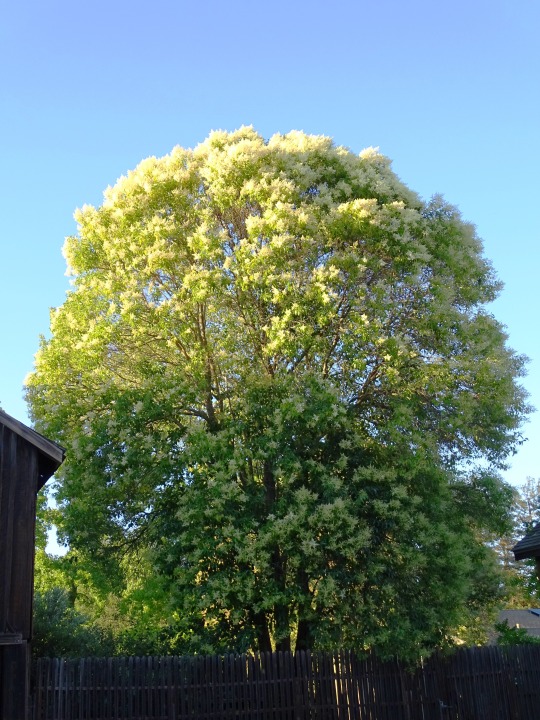

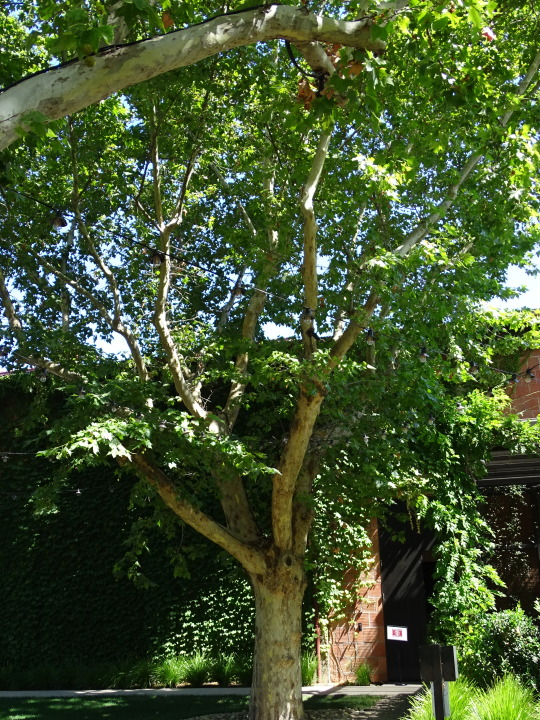


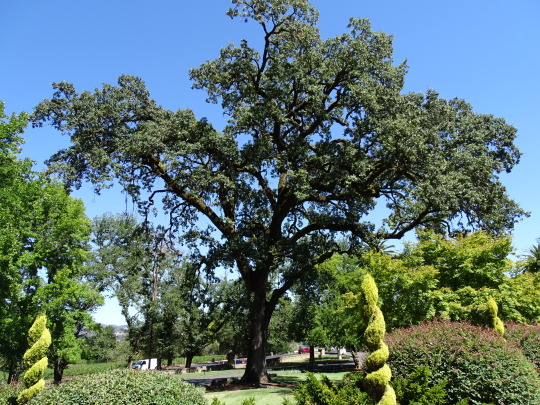
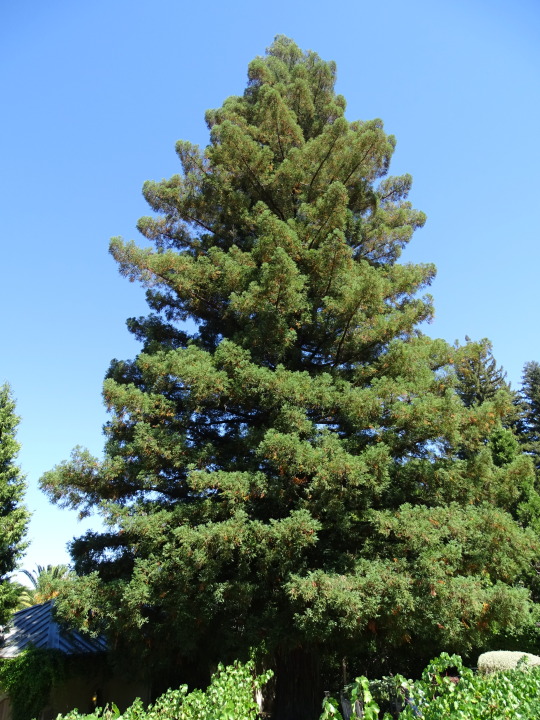
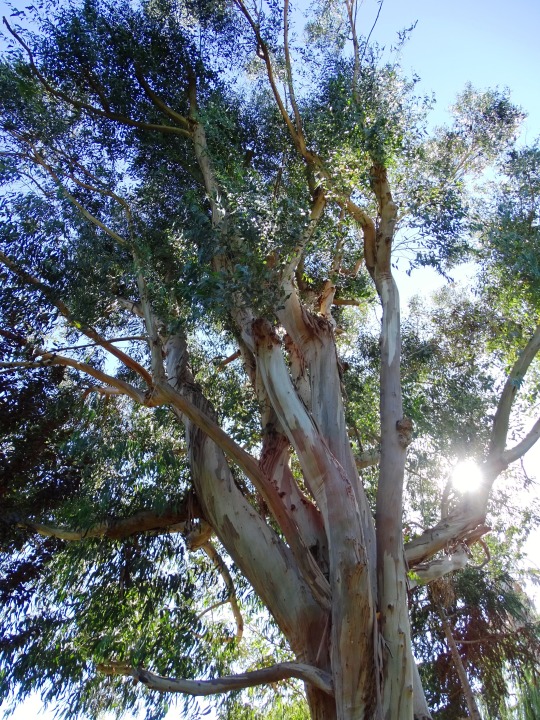
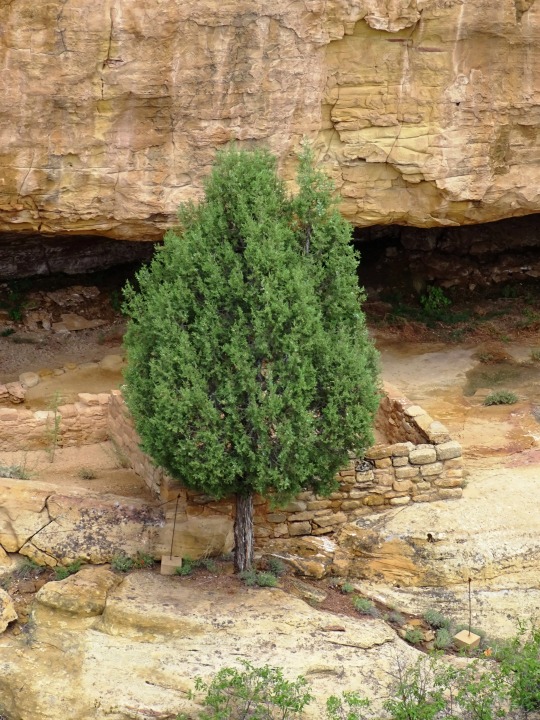

National Love a Tree Day
National Love A Tree Day is celebrated every year on May 16 and it falls right in the middle of Garden for Wildlife Month. Did you know trees actually didn’t exist for the first 90% of Earth’s history? Shocking, isn’t it? Before trees, our Earth had fungi that grew 26 feet tall and resembled trees. Trees have played an irreplaceable role in the smooth functioning of our environment and celebrating this special day dedicated to them is the least we can do to appreciate them.
History of National Love a Tree Day
Trees can be thousands and thousands of years old with many species tending to have long lifespans. In fact, trees can be traced back to the creation of the world, according to the Bible and the story of Adam and Eve who ate the fruit of the Tree of the Knowledge of Good and Evil.
From well-preserved cellular anatomy, it has been found that Cladoxylopsida were the first species of large trees to appear on Earth almost 400 million years ago in the Devonian period. The other earliest trees were known to be tree ferns, horsetails, and lycophytes and, currently, it is estimated that there are close to three trillion mature trees in the world.
Trees have so many benefits — they provide us with lumber, food, nuts, oxygen to breathe, home for wildlife, and much more. Trees are even used for ornamental and decoration purposes. In the United States itself, there are approximately 766 million acres of forest land.
Trees form an essential part of our environment and, over the years, their importance has been taught to children growing up. Even in recent times, individuals have become so environmentally conscious that a sustainable lifestyle to protect our trees has become the norm. Most people now want to protect and preserve our trees, which make the world a better and safer place to live in.
While the hunt to find the origins of this day is still on, an entire day of appreciation for trees that have given us so much is the least we can do.
National Love a Tree Day timeline
1800 Christmas Tree Tradition
European nobles and officials adopt and popularize the tradition of setting up evergreen conifer trees in homes for Christmas.
1830 –1860 Joshua Tree’s Name
These plants get their name from Mormon settlers as the shape of the tree’s branches reminds them of a biblical passage wherein Joshua raises his hands to the sky in prayer.
1994 Wollemia Trees Found
A few survivors of these ancient trees that were once thought to be extinct are found living in a temperate rainforest in Australia.
2007 First Tree Fossil
Fossils of probably the first tree, Wattieza, that date back to the middle Devonian period, are found in New York State.
National Love a Tree Day FAQs
What day is Tree Day?
Arbor Day occurs on the last Friday in April.
What is World Tree Day?
World Tree or Forest Day is celebrated annually on 21 March.
How are trees important?
They give us clean water to drink, air to breathe, shade, and food for humans, animals, and plants. They provide habitats for numerous species of fauna and flora, firewood for cooking and heat, materials for buildings and places of spiritual, cultural, and recreational importance.
How To Celebrate National Love a Tree Day
Hug a tree
Plant a tree native to your area
Go for a walk in the woods
Release your inner tree hugger and go hug some trees to show them your love. Make sure you do it in front of some people so you can inspire them to show their love to these gentle giants too!
Do some quick research on trees that are native to your area. Once done, you can go ahead and purchase some seeds for that tree and plant them. Put in an effort to look after it as much as possible and see the fruits of your labor grow, literally.
Trees are a vital part of nature and exist all around us. Why not spend the day among trees to celebrate? Go for a walk in the woods and soak in the beauty of trees.
5 Facts About Trees That Will Blow Your Mind
The oldest tree
Space travel
They save you money
Trees can communicate
Trees are very thirsty
A bristlecone pine tree named Methuselah has lived for more than 4,800 years and is older than the Egyptian Pyramids.
Trees have kind of traveled to space when tree seeds were taken up by Apollo 14 astronauts.
Having a mature tree’s shade near your house can actually help to reduce your home cooling bill by approximately 20% in the summer.
It has been found that trees start producing a chemical called phenolics when they detect an insect raid, which acts as a signal for other trees.
An average tree can drink up to almost 530 gallons of water annually.
Why We Love National Love A Tree Day
Trees keep our streets and homes cooler
It helps to reconnect with Earth
Trees are a habitat for wildlife
Urban areas can get significantly hot and even more so in summer. This is when our loving trees come to the rescue! The shade and water vapor provided by trees can keep urban areas so much cooler. National Love A Tree Day is a perfect opportunity to acknowledge the importance of this green cover.
Planting a tree or simply taking care of existing trees can evoke a sense of belonging with nature. Trees are nature, after all, and spending time with them can help you reconnect with Earth. National Love a Tree Day can be a good place to start if you’ve been feeling a disconnect with nature and life outside of routine work.
Of course, we know that a lot of animals live in the forests and need trees for survival. Trees are home to a diverse range of birds, insects, and mammals. A simple tree will also house hundreds or thousands of small creatures like snakes, frogs, millipedes, ants, termites, spiders, to name a few. National Love a Tree Day helps us appreciate these beauties that are essentially home to so many living beings.
Source
#Japanese Pagoda Tree#Louis M. Martini Winery#Freemark Abbey Winery#Napa Valley#Beringer Vineyards#Eucalyptus dalrympleana#Cline Family Cellars#Grand Mesa National Forest#Yosemite National Park#Mesa Verde National Park#California live oak#California#Colorado#USA#summer 2022#original photography#landscape#tourist attraction#vacation#countryside#National Love a Tree Day#NationalLoveaTreeDay#16 May#flora#nature
3 notes
·
View notes
Photo
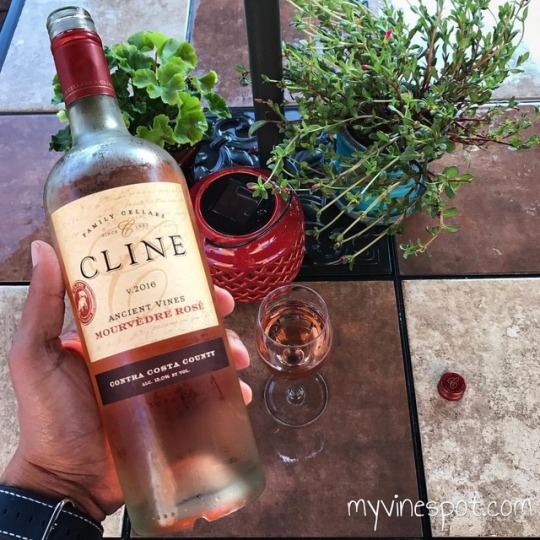
@ClineCellars 2016 Ancient Vines Mouvèdre Rosé (SRP $17): What better way to beat the summer heat than with a splash of this dry rosé from Cline Family Cellars. Made from century-old, dry farmed Mouvèdre grapes, this rosé is made from fruit grown on historic Oakley vineyard picked specifically for this wine — i.e., not the by-product of red wine production. Salmon-pink in color with cooper hues, flavors of fresh red berries complement notes of white stone fruit followed by a delicate jolt of peppery spice. A tasty refresher for summer day fun: be it poolside, beach, picnic under a shade tree, or backyard cookout. Other info: ABV 13%, screw cap enclosure. To learn more, visit their website clinecellars.com. #ClineCellars #dryfarmed #Mouvèdre #rosé #drinkpink #ContraCosta #wine #wineblogger #winewriter #winelover #myvinespot
#clinecellars#winelover#dryfarmed#drinkpink#wine#mouvèdre#wineblogger#rosé#myvinespot#contracosta#winewriter
4 notes
·
View notes
Photo
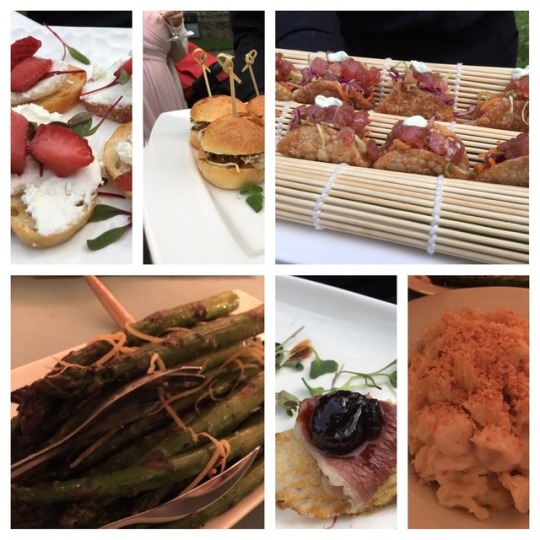
My husband and I attended our niece's wedding in Sonoma at Cline Cellars. The hors d'oeuvres were lovely! They included mini ahi tacos, pork sliders, crostini with goat cheese and pickled strawberries, and graufette with duck and blueberries. Also pictured is roasted asparagus and macaroni and cheese from dinner. There was a plethora of food for dinner - all served family style. The rehearsal dinner had Indian food- it was delicious!!!! And wine galore! We had a great trip to the Sonoma and Napa Valleys!!!
2 notes
·
View notes
Text
Cline Cellars Pizza Perfect Pairing Sweepstakes - Win Deluxe Pizza Oven
Cline Cellars Pizza Perfect Pairing Sweepstakes – Win Deluxe Pizza Oven
Cline Cellars Pizza Perfect Pairing Sweepstakes is air on now so you can enter in this Sweepstakes before September 30th, 2020. For increase your chance of winning Deluxe Pizza Oven. Entrants of the Sweepstakes must be United States residents.
Cline Cellars Pizza Perfect Pairing Sweepstakes Link
Cline Cellars Pizza Perfect Pairing Sweepstakes Rules
Cline Family Cellars Cline Cellars Pizza Perfect…
View On WordPress
#Chance To Win Deluxe Pizza Oven#Cline Cellars Pizza Perfect Pairing Sweepstakes#Cline Family Cellars Sweepstakes#woobox.com
0 notes
Text
What To Drink Now: Toasting The 4th of July
What To Drink Now: Toasting The 4th of July
Happy 4th!!! As you ready your picnic baskets and beach totes, consider light and refreshing, or bold and robust wine to enjoy on this beautiful day. Each unique blend celebrates their individuality while melding to become something great, much like the principles that defined our declaration of independence
We would be nowhere without our neighbor to the south, Mexico. Mexican immigrants have…
View On WordPress
#Cakebread#Cakebread Cellars#Ceja Wines#Cliff Lede#Cline Cellars#Concannon#Cuvaison#Ehler&039;s#FEL Wines#Merry Edwards#Mi Sueno#Signorello#Stoller Family Estates#ZD Wines
0 notes
Text
Contra Costa Passport Weekend 2019
Contra Costa Passport Weekend 2019
Enjoy two days of tasting wine that grows in your own backyard! Saturday we will be at Viano Winery, and Sunday visit Brentwood sites.
Spring has sprung, it’s time to explore the Award-winning wines of Contra Costa. The event is divided into two regions due to the size of the county. For tickets, click here
On May 18th, in the Western region, 12-5pm, at Viano Vineyards in Martinez, enjoy the…
View On WordPress
#Bloomfield Vineyards#Campos Family Vineyards#Cline Cellars#Contra Costa Winegrowers Association#Favalora Vineyards#Hannah Nicole Vineyards#Nunn Family Vineyards#Petersen Vineyards#Tamayo Family Vineyards#Viano Vineyards#Wedl Wine Cellars.
0 notes